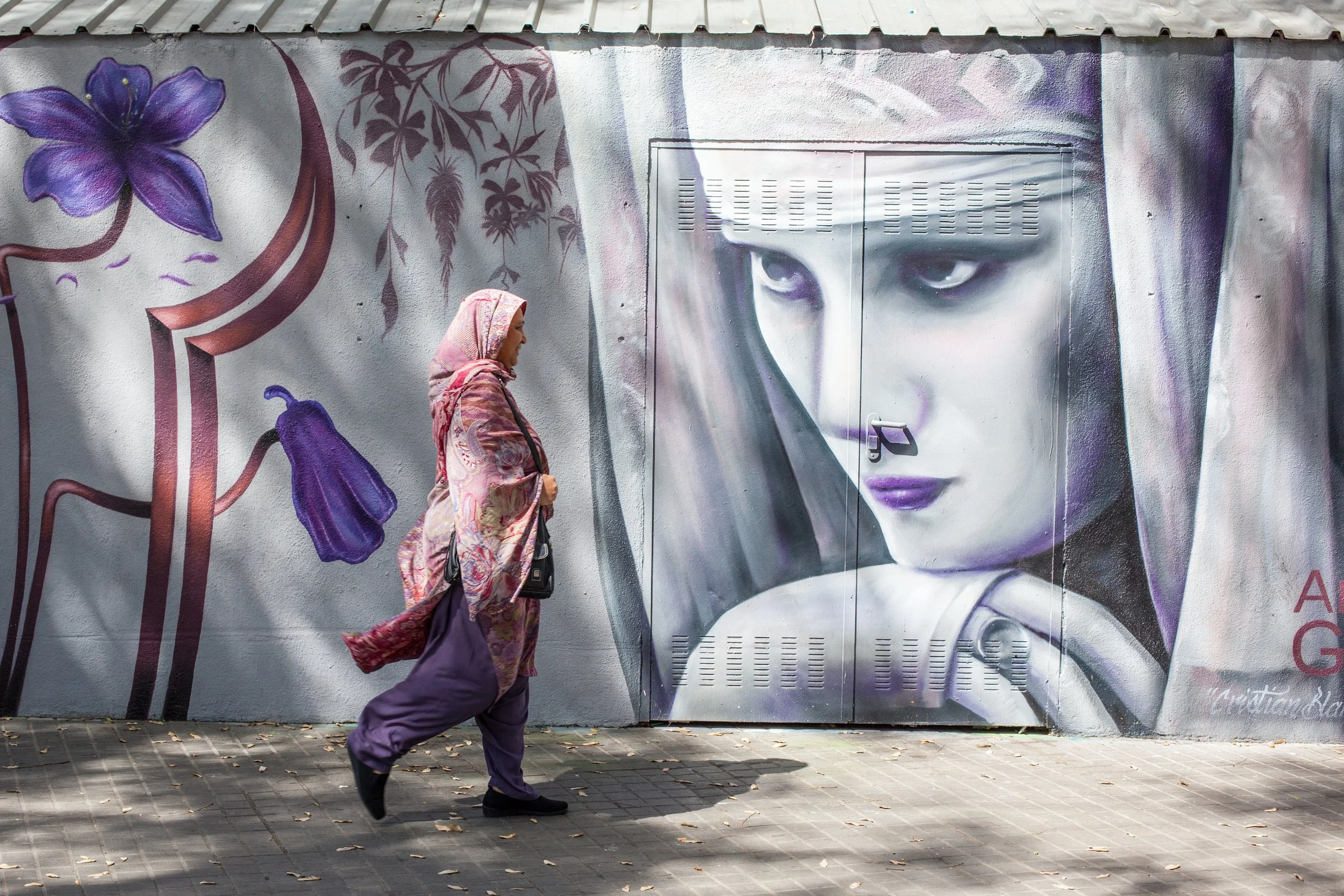Street photography is all about capturing life as it happens — candid moments, fleeting gestures, the poetry of everyday existence. It’s about roaming the streets with a camera, open to whatever unfolds. No staging, no second takes, just real people in real places.
Street art, on the other hand, is expression painted directly onto the city. Murals, stencils, graffiti — they transform grey walls into living canvases. Art for everyone, not locked away in galleries. It reflects politics, culture, and identity. Together, street photography and street art create a fascinating mix: one captures life happening in the present, the other leaves its mark on the walls for the future.
When I travel, I love nothing more than to roam the streets — camera in hand — and let things unfold. If I stumble across street art, all the better. It adds another layer to the story, another voice to the frame. It’s exactly what Ian Plant (whose street photography workshop I recently reviewed) talks about: finding abstract elements in the urban environment, and then waiting for people to bring the scene to life. A mural, an advertisement, even just shadows and architecture — all can become part of the composition.
One of my favourite examples of this is the image above, shot in the Raval area of Barcelona (or Ravalistan, as locals sometimes call it due to its multicultural flavour). It’s a moment of pure poetry: a woman in a colourful headscarf walking past a mural of another woman with her head covered looking on. A fleeting alignment of art and reality. Same theme, two worlds — one painted, one lived.
📸 Canon EOS 5D Mark II | EF50mm f/1.4 USM | ƒ/7.1 | 50mm | 1/320s | ISO 200
Location: Raval, Barcelona, Catalonia, Spain, Europe
That’s the beauty of this kind of work: sometimes you wait, sometimes you just get lucky. Either way, it’s the mix of patience, instinct, and curiosity that makes street photography so rewarding.
For more on my Barcelona adventures, check out my earlier post: Street Photography Tours in Barcelona.
And below, I’ve included a slideshow of more of my street photography and street art captures from around the world — each one its own little dialogue between painted walls and the lives passing by. From the raw, vibrant streets of Santiago, Chile, to the colourful icons splashed across Wynwood Walls in Miami. Barcelona makes several appearances too — a city constantly reinventing itself through the paint on its walls. In Mexico City’s Condesa, a Star Wars stormtrooper seems to take aim at an unsuspecting passerby, while in Havana, portraits of Che Guevara and Jimi Hendrix keep watch over the streets.
Street art fades, gets painted over, or disappears — but in that brief moment when it collides with real life, it creates something timeless. That’s what I try to capture: those fleeting conversations between wall and world.
👉 All images are available to purchase — get in touch via my website for prints or licensing.
#streetphotography #streetart #urbanphotography #artinpublic #citylife #travelphotography #documentaryphotography #streetphotographer #urbanart #photooftheday #barcelonastreetphotography #streetartphotography #everydaylife #streetphoto #peoplewatching #globalstreetart #urbanstories #streetcapture #candidphotography #visualstorytelling









































































